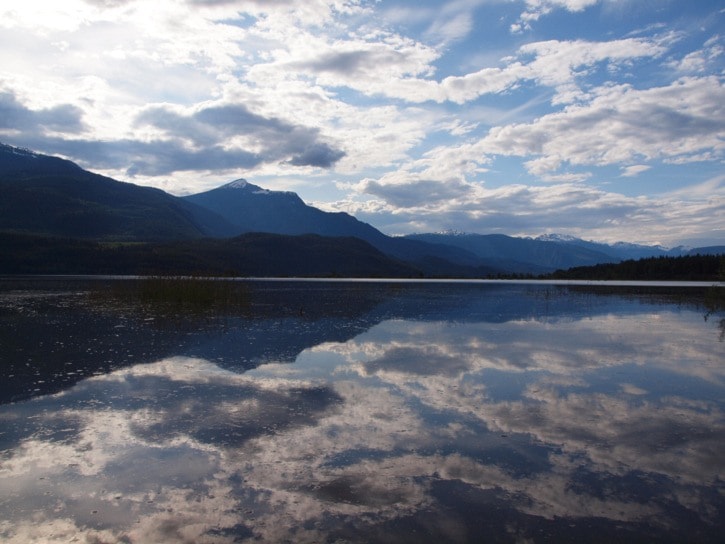Nine mile is inundated. The open grasslands I had visited twice before while accompanying researchers during their studies for the Columbia River Water Use Plan is underwater.
The changes are a fact of life in Revelstoke – dictated by the spring melt but also by BC Hydro operations, which adjust flows up and down the river to satisfy power demands and meet treaty obligations with the United States.
Now there’s another set of factors that are considered when BC Hydro looks at water levels – the Columbia River Water Use Plan (CWUP), which set a suite of operating interests for the Arrow Lakes Reservoir.
“We try to manage the operations to meet these interests in a balanced matter,” Gillian Kong, a specialist engineering with BC Hydro, told me. “The extent to which we meet those interests depends on our system requirements, weather and water conditions.”
There are numerous studies going on as part of the water use plan. I reported on four of them – re-vegetation, migratory bird monitoring, nesting bird monitoring, and algae and fish monitoring.
Those only represent a portion of the research going on – there are also studies looking into the painted turtle, reptiles & amphibians, burbot, spawning fish and recreational use. All these studies hope to gather more information.
There are different objectives for the various competing values. As a result, BC Hydro has set a variety of soft constraints they try to achieve on top of power generation and treaty requirements.
For example, recreational users prefer a high water level so BC Hydro targets water levels between the elevations of 437 metres and 439 metres between the days of May 24 and Sept. 30.
At the same time, to limit the impact to archaeological sites, the goal is to keep the water levels below about 435 metres. For fish habitat, the aim is to keep levels above 434 metres and for birds the aim is to have levels below 438.3 metres by Aug. 7.
The CWUP targets are known to BC Hydro as soft constraints – they don’t have to be met but BC Hydro strives to meet what targets it can, said Kong.
“Each year we look at what objectives we can meet and what tradeoffs we can do,” she said. “We know what levels are preferred for what objectives and this is what we’re going with right now to help us inform operation decisions.”
She gave some examples of how operations might be impacted. For example, the past two years featured low water levels, which helped meet low-water objectives like protecting bird and wildlife habitat but hampered high-water objectives like recreational use and fish habitat.
“If we don’t meet one objective in one or two years, then we’ll work harder to meet that objective the following year,” Kong said. “For example, I think we achieved the nesting bird objective quite successfully so with the high run-off conditions this year we’re looking to achieve the high reservoir targets.”
There are further constraints put in place by agreements signed with the United States, such as the Columbia River Treaty. In order for BC Hydro to release water from the Arrow Lake Reservoir beyond what’s agreed upon, they need to notify the United States. “We cannot change flows at Arrow without mutual agreement with the U.S,” Kong said.
Right now, the soft constraints set by CWUP are based on rough data on what was known at the time the plan was devised four years ago. The various ongoing studies will help provide additional data to help BC Hydro further refine its operating targets by providing information on how operations impact the various interests, said Kong.
“At the end of the ten year period we’ll make a decision on we can improve our operations.”
